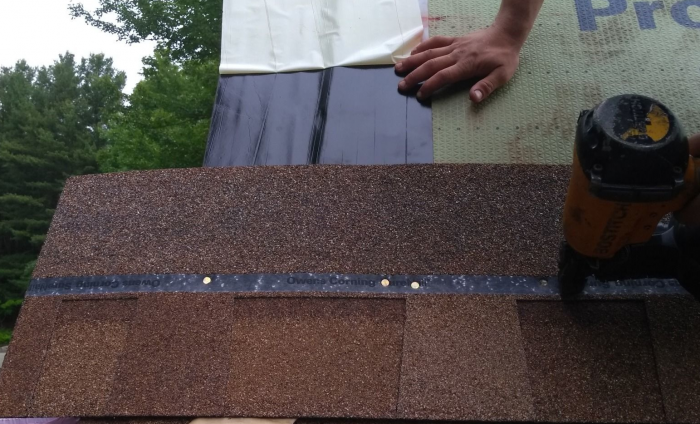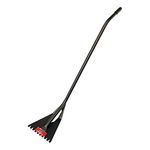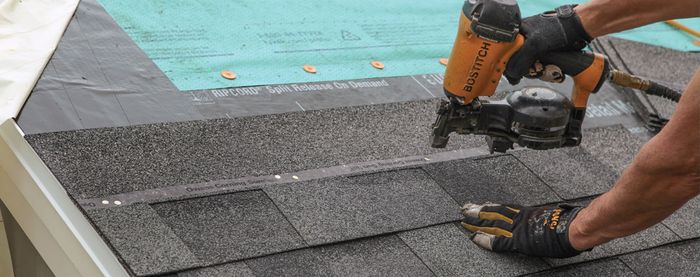Seal Rake-Edge Shingles to Reduce Blow-offs
You can hand-seal the rake shingles down to the drip edge or use a double-sided roofing tape.

Shingles along rake edges are vulnerable to being blown off in high winds. Often the nails alone won’t hold the shingles fast to the roof. The risk is that once the shingles along the edge are blown off, the field shingles may be more prone to being blown off too.
There are a couple methods I employ to help hold the shingles down along rake edges: Double-nailing the end of the shingle is an easy upgrade and only takes a second. Another is to bed the shingles in a wide strip of asphalt roof cement. This is a recommended practice by FEMA and the Institute for Business and Home Safety as part of their Fortified Home Program.
Rather than dealing with roof cement, I have been using a double-sided self-adhering roofing tape: ProtectoWrap’s Roof Edge Seal. It’s 12 in. wide—wider than the 8 in. of roof cement recommended by the Fortified Home program guide. Unless it’s sunny or hot out, the Roof Edge Seal adhesive is not aggressive, but once it’s been down for a day (even in cool weather), it bonds tight to the drip edge and the roof shingle. Keep in mind that the sealant only bonds the head lap of the shingle down. The exposure portion of the shingle is still only bonded down by the shingle’s self-seal strip. So you can further improve wind uplift resistance by hand-sealing the exposure portion to the shingle beneath with roof cement.
 In order for the Roof Edge Seal or a band of roof cement to be effective at holding shingles down, they must be bonded directly to wide metal drip edge. I usually use drip edge with a minimum 5-in.-wide roof leg. Then I nail it down at about 4 in. in a W pattern along each length.
In order for the Roof Edge Seal or a band of roof cement to be effective at holding shingles down, they must be bonded directly to wide metal drip edge. I usually use drip edge with a minimum 5-in.-wide roof leg. Then I nail it down at about 4 in. in a W pattern along each length.
In addition to helping to hold the shingles from blowing off, sealing the shingles down can help block wind-driven rain from getting between the drip edge and the shingle, and making its way onto the underlayment.
mikeguertin.com IG / @mike_guertin
Fine Homebuilding Recommended Products
Fine Homebuilding receives a commission for items purchased through links on this site, including Amazon Associates and other affiliate advertising programs.

Peel & Stick Underlayment

Ladder Stand Off

Shingle Ripper


View Comments
Fantastic information in an entertaining way! The blog gives so much insight into the subject matter that it does not only become quite easy to understand the concept but to implement it as well.
thank you very much
What's up with all the prior fluff comments. Is somebody getting compensated to make comments?
I wonder that myself.